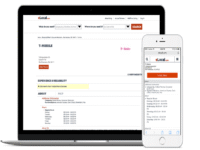Metrics That Matter in Subscription Services

In the ever-evolving landscape of digital commerce, subscription-based models have emerged as a robust and sustainable business strategy. From streaming platforms and software-as-a-service (SaaS) tools to subscription boxes and online learning platforms, businesses are shifting towards recurring revenue models to build long-term customer relationships. But maintaining a successful subscription business is more than just acquiring customers—it is about understanding the numbers behind growth, retention, and profitability.
This is where metrics come into play. Metrics offer the insights needed to evaluate performance, optimise strategies, and make informed decisions. For anyone managing or working within a subscription-based business, knowing which metrics to track can make all the difference in a competitive marketplace.
Why Metrics Matter in Subscription Models
Without clear metrics, it is not easy to judge whether a business is growing healthily, leaking revenue, or investing resources in the right places.
Tracking relevant metrics allows teams to:
- Identify what drives customer loyalty.
- Detect churn early.
- Calculate marketing effectiveness.
- Optimise pricing and packaging.
This analytical approach is often introduced in a Business Analysis Course, which teaches professionals to interpret performance data and turn insights into action. Such foundational knowledge is crucial for effectively managing subscription models.
Key Metrics for Subscription Services
Monthly Recurring Revenue (MRR)
One of the most critical metrics in any subscription business, Monthly Recurring Revenue refers to the projected revenue a company expects to receive each month from active subscribers. MRR helps track revenue trends and provides a baseline for forecasting growth.
Formula:
MRR = Number of Subscribers × Average Revenue per User (ARPU)
Breaking down MRR into components, such as new MRR, expansion MRR (from upsells), and churned MRR, provides further clarity on what drives overall performance.
Customer Lifetime Value (CLV)
CLV provides an estimate of how much profits a business can expect from each customer throughout their subscription journey. A high CLV indicates strong customer retention and can justify higher acquisition costs.
Formula:
CLV = Average Revenue per User × Average Customer Lifespan
CLV is crucial for budgeting marketing spend and projecting future income. Professionals trained through a Business Analyst Course are often equipped to calculate and interpret CLV effectively in real-world scenarios.
Customer Acquisition Cost (CAC)
CAC estimates the cost of procuring a new customer, including expenses for advertising, sales, and promotional activities. Comparing CAC to CLV helps determine whether acquisition strategies are sustainable.
Formula:
CAC = Total Sales and Marketing Costs ÷ Number of New Customers Acquired
If CAC exceeds CLV, it signals an imbalance and the need for strategic adjustments.
Churn Rate
The churn rate is the percentage of customers who are likely to cancel their subscription within a specified period. High churn is a red flag that may indicate poor onboarding, product dissatisfaction, or a lack of customer engagement.
Formula:
Churn Rate = (Customers Lost During Period ÷ Total Customers at Start of Period) × 100
Monitoring churn trends enables businesses to address user concerns and enhance retention proactively.
Supporting Metrics That Offer Deeper Insights
While core metrics like MRR and churn form the foundation, several supporting metrics help paint a fuller picture of business health.
Net Revenue Retention (NRR)
NRR measures the amount of revenue retained from existing customers after accounting for upgrades, downgrades, and customer churn. A rate above 100% signals that the business is growing through existing users.
Activation Rate
This metric tracks the number of users who complete a specific set of actions (such as setting up their profile or using a feature) shortly after signing up. A high activation rate often leads to better long-term retention.
Trial Conversion Rate
For services offering free trials, this metric shows the percentage of users who convert into subscribers. It reflects the effectiveness of onboarding and the perceived value of the product.
These supporting metrics help uncover opportunities for growth and optimisation—skills that are deeply emphasised in a structured Business Analysis Course.
Using Metrics to Drive Strategy
Metrics alone do not drive results—it is the interpretation and application of these numbers that matter. Subscription businesses use these metrics to:
- Segment customers: Understanding which users bring the most value enables better targeting and personalised retention strategies.
- Test pricing models: Data-driven A/B testing can guide decisions on pricing tiers, bundling, and freemium plans.
- Improve user experience: If the churn rate spikes at a specific stage in the user journey, it may indicate friction points that are worth addressing.
- Refine acquisition campaigns: Monitoring CAC alongside lead quality ensures marketing efforts are not only bringing in customers, but the right kind of customers.
This strategic approach is often cultivated through hands-on exercises in a professional-level course, where learners practise aligning metrics with business objectives.
Real-World Application: A Case Example
Imagine a SaaS company offering project management tools. They have noticed that their churn rate has gradually increased over the last three months. By diving into activation and trial conversion rates, they realise that a recent change to the onboarding process has led to lower initial engagement. Restoring the old workflow and providing new tutorial content leads to higher activation rates, eventually stabilising churn.
Meanwhile, by segmenting users by industry and company size, they find that small teams in creative sectors have a higher CLV. Marketing is then adjusted to focus on this audience, resulting in a more efficient CAC-to-CLV ratio and a boost in MRR.
Such analytical thinking and data storytelling are key outcomes of experience and expertise, both of which are required for professionals to use data to improve outcomes.
The Role of the Business Analyst in Subscription Models
Skilled business analysts can interpret these performance indicators and translate them into actionable business steps. In a subscription context, their tasks often include:
- Designing dashboards to monitor MRR, churn, and CLV.
- Collaborating with product teams to identify user journey friction points.
- Advising marketing on CAC trends and attribution models.
- Providing input on pricing strategies using ARPU and NRR data.
Analysts who have completed a career-oriented learning gain technical skills, as well as skills in stakeholder communication and strategic thinking—qualities essential for making metrics matter.
Challenges in Metrics Interpretation
Despite their usefulness, metrics can sometimes mislead. For instance, a spike in new MRR may mask a high churn rate among older users. Or a seemingly low CAC may correspond with low-value users who quickly leave the platform.
Avoiding these hurdles requires an in-depth understanding of metrics in context and the ability to connect data to business goals. That is why structured learning environments are increasingly important in today’s data-centric world.
Conclusion
In subscription services, success lies in what you measure and how you act on it. Metrics like MRR, CLV, churn rate, and CAC are more than just numbers—they are the signals that guide growth, efficiency, and long-term viability. Supporting metrics such as activation rate, trial conversion, and NRR provide even deeper insights that allow businesses to fine-tune every part of the customer journey.
As competition intensifies and customer expectations evolve, the ability to interpret and apply these metrics will become a defining skill. For professionals aiming to excel in this environment, enrolling in a Business Analyst Course can offer the practical tools and analytical mindset needed to turn data into meaningful strategy. In the world of subscriptions, the right metrics can make all the difference.
Business Name: ExcelR- Data Science, Data Analytics, Business Analyst Course Training Mumbai
Address: Unit no. 302, 03rd Floor, Ashok Premises, Old Nagardas Rd, Nicolas Wadi Rd, Mogra Village, Gundavali Gaothan, Andheri E, Mumbai, Maharashtra 400069, Phone: 09108238354, Email: enquiry@excelr.com.






